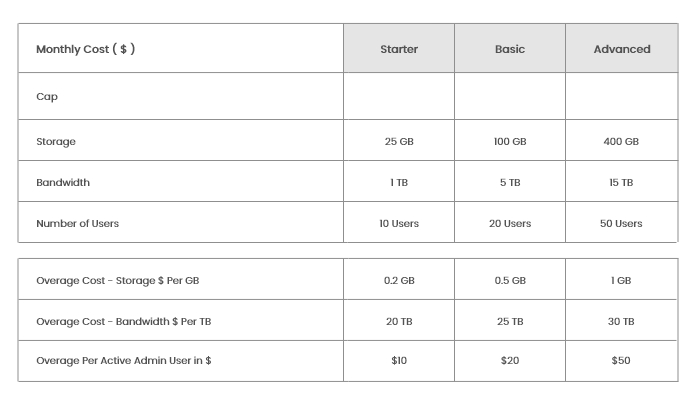



What Exactly Is a URL? Meaning, Structure, and Optimization
URLs are crucial. Because they assist users with accessing the webpage they wish to visit...
What Exactly Is a URL?
A URL (Uniform Resource Locator) is the web address of a resource on the internet, such as a web page.
The URL of the webpage you're on may be found in the address bar at the top of your browser's window.
URLs are crucial. Because they assist users with accessing the webpage they wish to visit.
Furthermore, if you're conducting SEO, they can assist you in optimizing your website by supplying information to search engines regarding the content and purpose of a page.
So they can properly rank it.
This article will teach you how URLs are structured and how to optimize them for higher search engine rankings.
Let's get started.
Explaining URL Structure
A URL's structure is divided into seven separate sections.
1. Protocol
The protocol specifies how your browser should connect to a webpage.
HTTP (hypertext transmission protocol) or HTTPS (HTTP secure) could be used.
The primary distinction between the two is that HTTPS encrypts and secures any data sent between the server and the browser.
As a result, when users interact with your site, sensitive information (such as login and credit card information) is protected from attackers.
HTTPS is used by websites that display a lock icon in the address bar.
Websites that display a "Not Secure" warning in the address bar, on the other hand, use HTTP.
2. Subdomain
A subdomain is a string of letters or a full word that appears before the first dot in a URL.
www is the most often used subdomain. It is an abbreviation for World Wide Web, indicating that the URL is a web address.
Previously, it was normal to use www. However, you may now remove it from your URLs if you choose.
It makes no difference whether you use it or not. It all comes down to personal preference.
Other subdomains, such as blog, store, support, news, and careers, are used for controlling and organizing areas of a website that perform a certain function.
3. The Domain
The major portion of the URL that identifies the website is the domain.
If you're looking for a domain name, we recommend going with something short and catchy.
People are more likely to remember domain names that are short and snappy. As a result, customers are more inclined to visit your website again.
Furthermore, they are easier to include into logos and other branding materials than long, convoluted ones.
4. TLD (Top-Level Domain)
The TLD (also known as domain extension) is the section of your website's name that follows ".com."
There are numerous TLDs available on the internet. Here are five of the more prevalent ones. And what kinds of websites they are appropriate for:
- .com: Business websites
- .org: stands for non-profit organizations.
- .net: Companies that provide network services through software and hosting.
- .edu: Educational establishments (universities, colleges, schools, and so on).
- .gov: Agencies and departments of the government
If you're just starting out with domain names, we recommend going with a TLD that best represents the nature of your business.
You can also utilize country-code top-level domains (ccTLDs).
ccTLDs are two-letter domain extensions that identify a website's affiliation with a particular country or territory.
When a website's target audience is mostly based in a single country, using ccTLDs makes sense.
A website communicates its link to that location by utilizing a ccTLD. This can aid in the establishment of trust and credibility among users in that location.
5. Subfolder
A subfolder is a folder or directory that is contained within your site's top-level directory (or main directory).
Consider the URL "www.domain.com/blog/" as an example.
The "blog" subdirectory is contained under the website's main directory, which is "www.domain.com" in this URL.
Subfolders, like subdomains, are used to divide website material into logical divisions.
This assists visitors in determining where they are on the website.
6. Slug
A slug is the component of a URL that identifies a certain internet page or post. It assists users in comprehending the context and content of a page.
Consider the following URL slug: "/best-baby-shampoos/"
Users can get a sense of what the website is about just by reading the slug.
However, you may run across URL slugs that look like this: "/785321/"
Users are perplexed by slugs that contain numbers.
The URL slug's principal purpose is to describe the content of a page. So, while creating a slug, make it descriptive.
7. Parameters for URLs
URL parameters (or query strings) are the characters that follow the question mark (?).
They are made up of keys and values that are separated by an equal sign (=).
The key indicates the type of data being transmitted. The information being passed is the value.
What Are the Various Types of URLs?
URLs are classified into two types: absolute and relative.
The protocol, optional subdomain (www), domain name, and path (which contains the directory and URL slug) are all specified in an absolute URL.
An example of an absolute URL is as follows:
https://www.hocalwire.com/blog/what-is-local-seo/
A relative URL specifies only the path. That is the URL slug and the directory.
Consider the following relative URL:
/blog/what-is-local-seo/
URLs can also be categorized based on the purpose they serve:
- Canonical URLs: A canonical URL serves as the master version for your site's duplicate URLs. Canonical URLs can help you avoid duplicate content concerns, which can hurt your search engine rankings.
- URLs for Callbacks: When a user completes a specified activity or job, they are immediately forwarded to a callback URL. The callback URL is the page that users are routed to after successfully authenticating with a third-party authentication provider such as Google when they login to a website.
- URL Vanity: A vanity URL is a short and easy-to-share custom URL. They're frequently used in marketing campaigns or on social media to promote a specific page on your website. URL shortening programmes such as Bitly, TinyURL, and Short.io can be used to make them.
How to Make SEO-Friendly URLs
Optimizing your URL structure for SEO is one approach to ensure your pages rank in search engines and receive more traffic from Google.
Here's how to go about it.
1. Make use of the HTTPS protocol
HTTPS protects the sensitive information of your visitors from intruders. It has also been a minor Google ranking component since 2014.
If your website is still using HTTP, you should make the move today by encrypting it with an SSL (Secure Sockets Layer) certificate.
You can obtain one from your hosting provider.
2. Do Not Use Subdomains
It makes no difference in terms of SEO whether you use "www" as your subdomain.
People have begun to exclude it from their URL structure because it is not required for a website to perform properly.
Furthermore, removing the "www" from your URLs will make them shorter and simpler. That is, they are easier to enter into browsers.
When it comes to using subdomains to organize information into several sections, we recommend using subfolders instead of subdomains. Especially for content that is meant to rank high in search engines.
In the SEO world, this is a hotly discussed topic.
According to Google, either subdomains or subfolders are OK.
Many SEOs, however, contend that Google recognizes subdomains as different websites. As a result, they will crawl and index subdomains individually.
This means that any authority gained from backlinks may not be shared by the domain and subdomains.
As a result, your subdomains may have difficulty ranking higher.
Subfolders may be preferable from an SEO standpoint.
What we do know is that subfolders do not generate the same problems as subdomains do. Subfolders are therefore your best bet.
3. Select an Appropriate TLD
The TLD you select is determined by the purpose of your website. The ideal domain extension for nonprofit organizations is.org.
.edu is the best TLD for educational institutions such as universities, colleges, and schools.
For commercial websites,.com is the best option.
However, avoid utilizing TLDs such as.info and.biz, which are often associated with spam. As a result, building high-quality backlinks to your site may be difficult. Which are important in order to rank higher?
4. Organise Your Content Using Subfolders
Use subfolders to logically organize your content and help users understand where they are on the page.
This is significant from the standpoint of user experience (UX). This is strongly related to SEO.
Your subfolders should describe the type of information available at that URL. This will also help Google better understand your content.
https://website.com/blog/best-seo-tips/ is a useful subcategory.
https://website.com/folder1/best-seo-tips/ is a bad subfolder.
If you have a really large website, such as an e-commerce site, it can be difficult to organize all of your pages using only one level of subdirectory.
In that instance, use sub-subfolders to further describe the hierarchy of your website.
5. Slugs for URLs
To optimize your URL slugs for SEO, you must accomplish four things.
Be Descriptive
According to Google, your URL slug should describe the page's content because it helps the search engine comprehend what the page is about. And then rank it accordingly.
The best method to make your URL slug descriptive is to incorporate the target keyword of your page.
Make it brief
Long URLs are more difficult for users to read. In addition, Google frequently truncates long URLs in search results.
Separate words using hyphens.
Instead of underscores, Google recommends using hyphens to separate terms in your URL slug. They're a common approach to separate words in a URL.
Use Lowercase Letters
Case matters when it comes to URLs. Furthermore, having a specific URL in both lowercase and uppercase can lead to duplicate content concerns on your site.
Furthermore, lowercase URLs make it easier for visitors to correctly write the URL. URLs that blend capital and lowercase letters can cause typing issues.
Hocalwire CMS handles the technical parts of keeping Large Sitemap, Indexing pages for Google, Optimizing page load times, Maintaining assets and file systems, and Warning for broken links and pages while you handle all these non-technical components of SEO for Enterprise sites. If you're searching for an enterprise-grade content management system, these are significant value adds. To learn more, Get a Free Demo of Hocalwire CMS.

